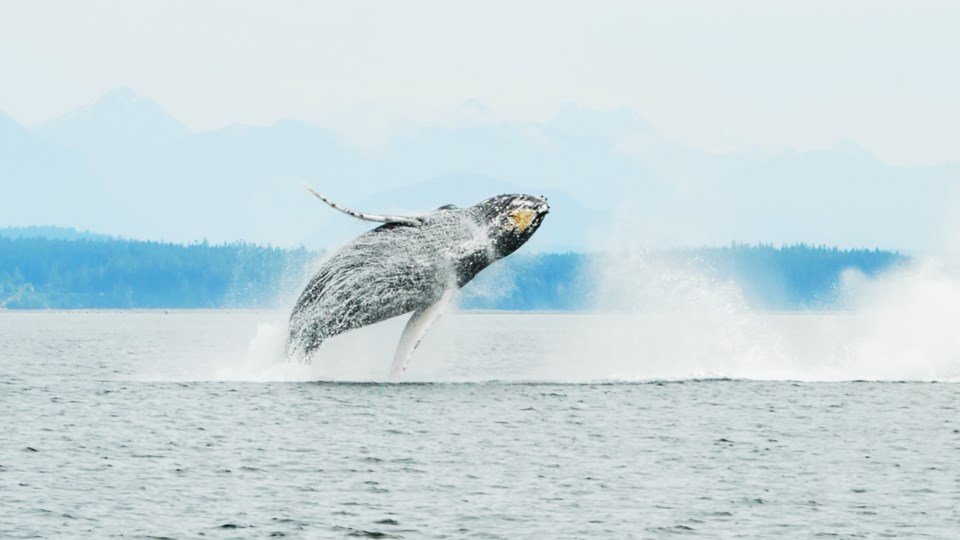July was an exciting month for humpback whale sightings in the qathet region. Locals and tourists alike reported many encounters with the giant sea mammals.
Most of the sightings happened around Willingdon Beach and near the south end of Ahgykson Island in the Malaspina Strait. According to Susan MacKay, executive director of the Wild Ocean Whale Society (WOWS), she saw several whales breaching and blowing in the mid-July sun.
On July 26 around 5:45 p.m., observer Glynis Higgins reported seeing two or three humpback whales playing in the middle of the channel off Westview. She noted that a mother and her calf were rolling, slapping their fins, and enjoying the water.
More whale activity was seen across other parts of the region. Colin Griffinson of Pacific Yellowfin Charters saw humpbacks taking long dives between Rebecca Rocks and Malaspina Strait. At the end of the month, Heather Harbord also spotted humpbacks near the old mill area in Townsite.
WOWS volunteer Ivan Ng shared in a recent update that the second half of July brought many more sightings of humpbacks in British Columbia. According to Ng, whales were seen in both the Juan de Fuca Strait and Georgia Strait.
The whales were active. Some were breaching, while others slapped their tails or fins on the water. A few were also seen feeding by lunging near the surface. In one rare moment, a humpback was even heard “trumpeting.” This happens when a whale pushes air through its blowholes, making a sound like a trumpet.
During the same time, there were reports of other marine life as well. These included sightings of transient and northern resident orcas, Pacific white-sided dolphins, and even a sea otter.
With so much activity in the area, WOWS is urging boaters to stay alert. Whales and dolphins may be nearby if you see water sprays (blows) or boats that have stopped or are moving slowly.
The organization reminds all watercraft users to follow the rules. Boats must stay at least 400 meters away from any orca. For humpback whales and other species, the distance must be at least 100 meters.
Respecting these distances is key to keeping the whales safe and undisturbed. With more and more people enjoying time on the water, awareness is important.
The many whale sightings in July show that the qathet region is a hotspot for marine life. With the help of WOWS and local spotters, the area continues to be a vital part of tracking and protecting these gentle giants.
As the summer continues, whale watchers and boaters are likely to spot even more activity. WOWS will keep updating its whale map with new reports. Anyone who sees a whale is encouraged to share the sighting through the WOWS system.

